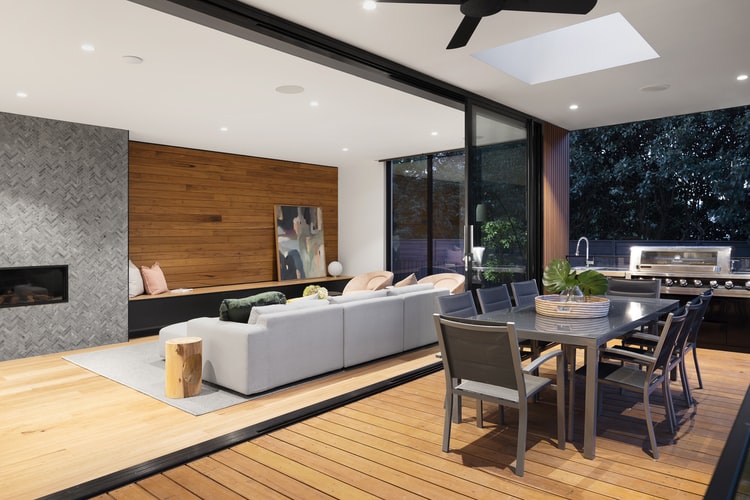What to Consider When Building a Smart Home


Most people take an existing home and retrofit it for smart technology. But if you’re building a house, you have the distinct advantage of making it intelligent from the start. The key is to plan ahead.
3 Helpful Smart Home Construction Tips
Before you begin the adventure of constructing a smart house, get clear on what it is that you’re trying to achieve. Considering that you’re building the home to live in – not as a spec house that will be put on the market and sold – it’s important to understand that the technology you’re integrating won’t necessarily increase the value of your home. Keeping this in mind, it’s imperative that each feature benefits your family.
Are you looking for an amazing entertainment system that looks incredible? Or are you more interested in energy savings and functionality?
“It’s also important to consider how your needs will change over time,” real estate insider Cathy Hudson writes. “Your initial focus should be making your home’s infrastructure smart home friendly, with data access points that can withstand future innovations and accommodate the latest advances in technology.”
With all of that being said, here are some practical ways you can rethink home building with smart home technology:
- Prioritize Security
Security should be the first priority when constructing a smart home. This is true on a couple of different levels:
- First off, you need to prioritize physical security by incorporating as many smart security features as possible. This includes things like doorbell cameras, motion flood lights, smart locks, etc. Try to address as many of the major problem areas as you can by incorporating each smart element into the same system. You want to be able to control all of them together while also retaining the flexibility to control any one element independently from the others.
- Secondly, make sure the smart system itself is secure. While things are improving, smart home devices are prone to numerous security concerns and vulnerabilities. The last thing you want to do is make your home more susceptible to security risks like ransomware attacks, identity theft, location tracking, password exploitation, and rogue recordings. Never assume that a device’s native security features are working. Always look for additional layers and add-ons.
If you lead with security, everything else will fall into place with less friction. It’ll still require a certain amount of work, but you won’t have to worry about serious concerns like cyber attacks.
- Spend on Lighting
Lighting is one of those things that the average homeowner doesn’t spend a whole lot of time thinking about, but that has the potential to make or break your home’s aesthetic appeal and functionality.
While you might want to use some sort of central hub, many smart home lighting systems function just fine without them.
“Bulbs from Cree, LIFX, and TP-Link, for example, communicate over Wi-Fi, while some others — including the newest Philips Hue bulbs — communicate via the Bluetooth radio in your smartphone,” TechHive contributor Christopher Null writes.
Since you’re building a home, consider what your long-term lighting plans are. A smart light is only as smart as the element that controls it. If you’re using traditional light switches – also known as “dumb switches” – you’re effectively limiting what your smart lights can do. Try installing smart light switches that operate on your home’s Wi-Fi network and don’t require any sort of central hub.
- Don’t Box Yourself In
As you know, technology moves quickly. Just 20 years ago, a desktop computer was big and bulky. It took up most of your desk and required wires, monitors, keyboards, mice, speakers, etc. Today, you have more power in a tablet the size of a paperback book. Keep this in mind as you design your smart home.
Technology will improve over time. Avoid boxing yourself in by designing your house around today’s current technology. Instead, utilize what you have today while operating under the assumption that it’ll be obsolete in five to seven years. At that point, it should be easy to remove, replace, and retrofit.
Start Designing Your Smart Home
Every homeowner has a different idea of what makes a smart home smart. Once you figure out what you want, you should focus all of your energy and effort on accomplishing those objectives. Likewise, be mindful of the shiny objects and gadgets that won’t support your lifestyle needs. These are nothing more than distractions. Stay focused!
